In residential landscape design and landscape architecture, concrete can be largely avoided. Below we’ve outlined our go-to alternative hardscape materials that don’t require concrete use.
This is Part Two of our series on concrete. Catch up on part one, The Hidden Cost of Concrete and Cement, where we examine the human health and environmental consequences of pervasive concrete.
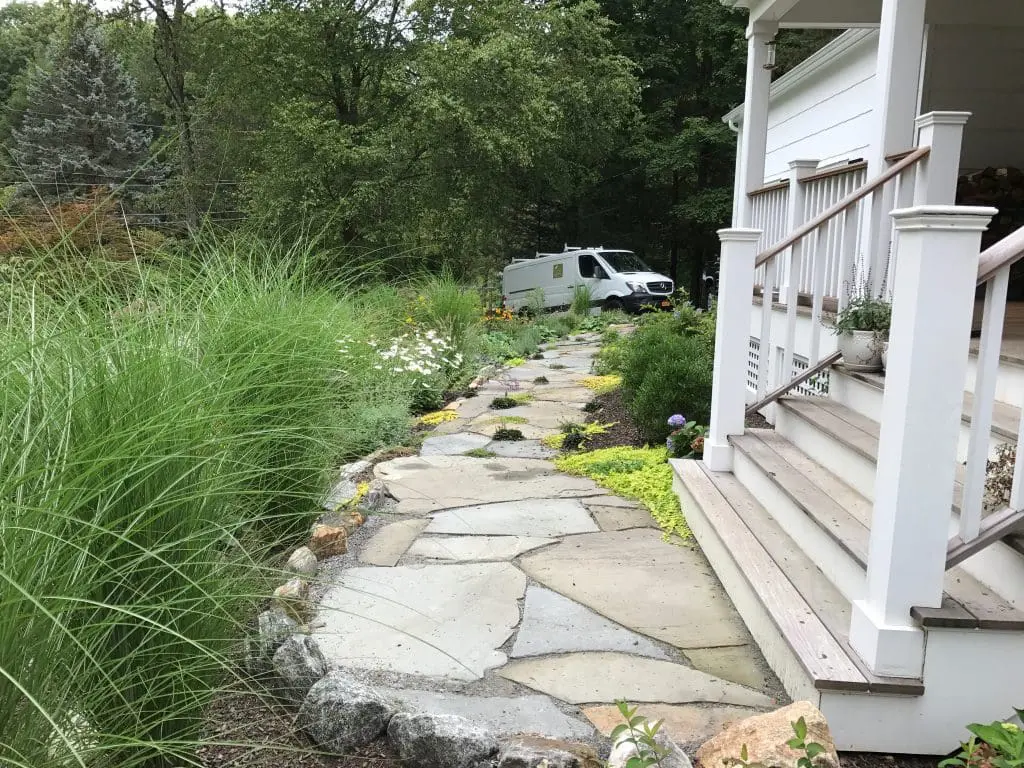
Natural Stone, Superior to Pavers
For high-use or more formal residential hardscape areas, such as front walkways, patios, and staircases, we most often use natural stone on a stone dust base. From a design perspective, natural stone lends an irreplaceable sense of permanence, timelessness, and grandeur.
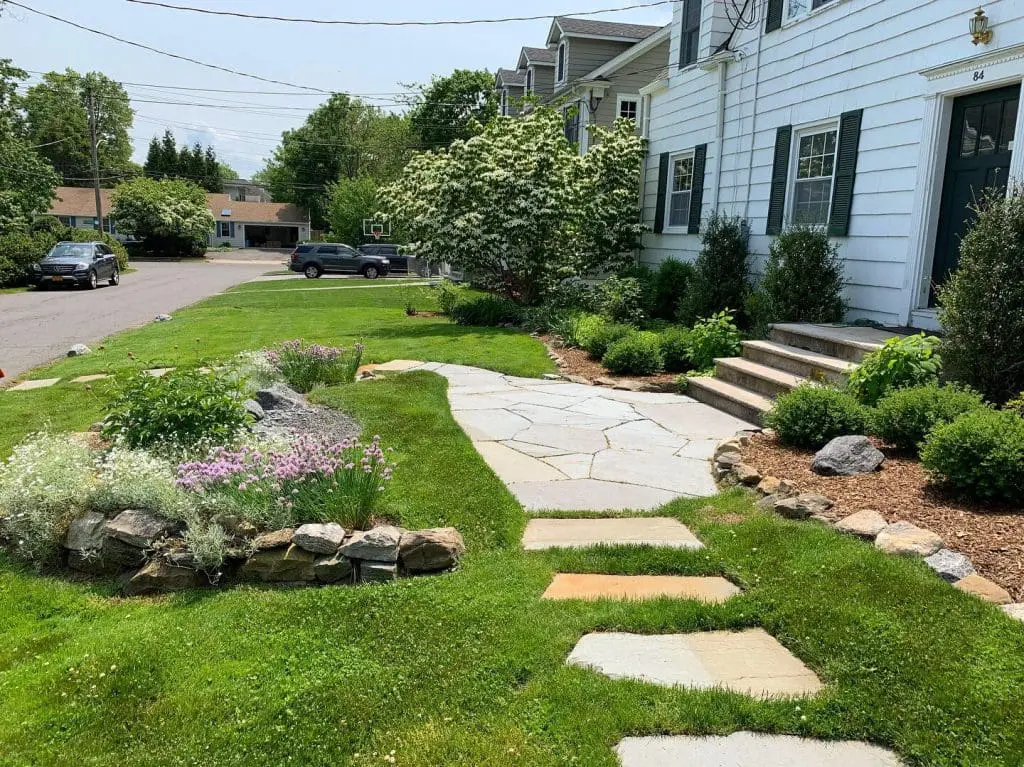
Since it is a natural product, there are no manufacturing emissions, unlike for concrete pavers. There are of course are some emissions associated with transporting stone, and a degree of environmental disturbance involved with quarrying, but New York State regulates quarries and requires them to properly dispose of waste and replace and restore the “overburden” – the rocks and dirt removed to reach the harvestable stone.
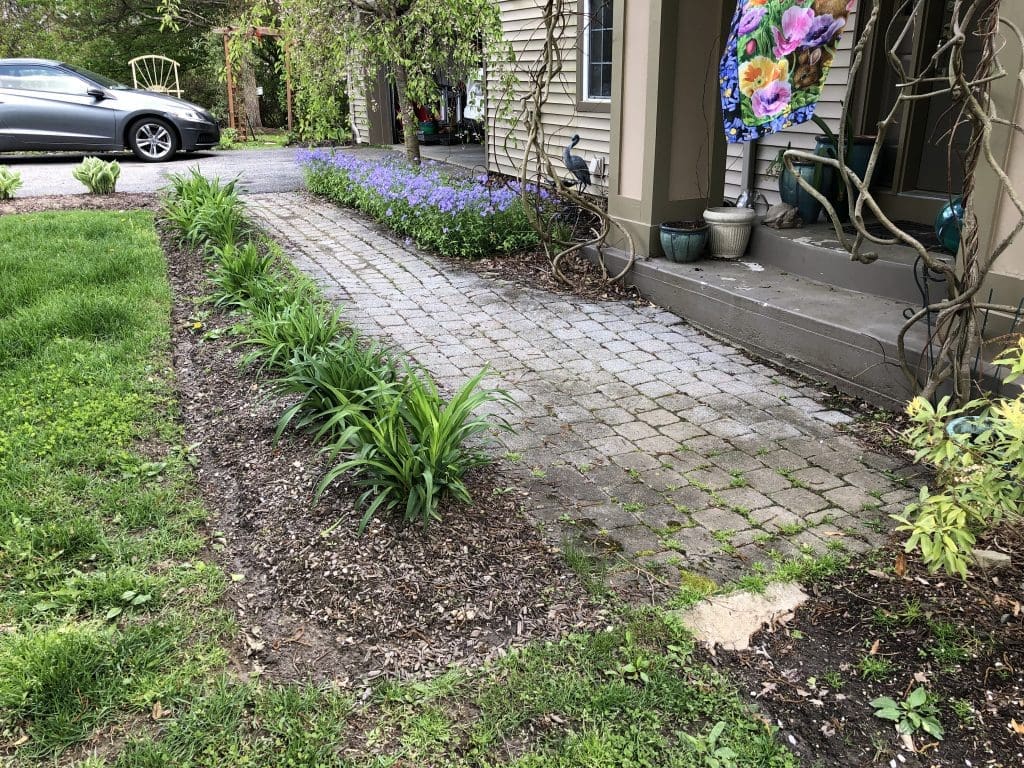
That brings us to another benefit – locally sourced materials. We use local landscape supply companies, such as Bedford Gravel and Prospero, which source their stone from New York and Pennsylvania and New England. Using local quarries cuts down on transportation emissions and also achieves a design aesthetic that aligns with the sense of place and history for each property. For example, Bluestone is a unique and beautiful form of sandstone only quarried in NY and PA; using it in our landscapes celebrates this natural resource
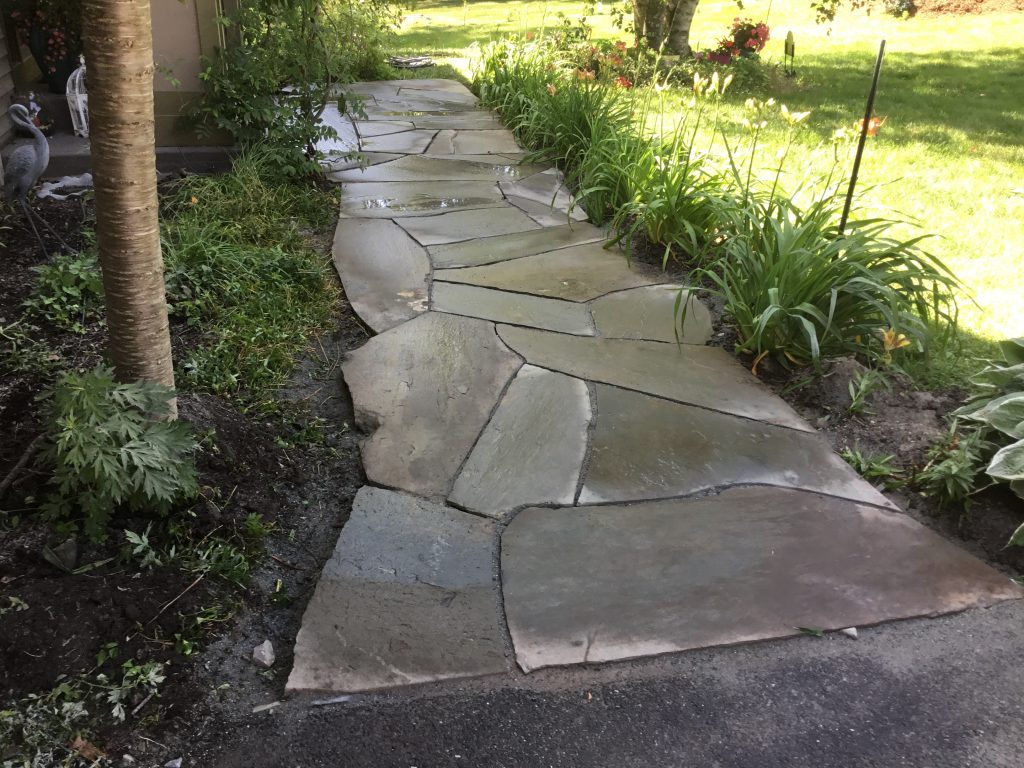
Natural stone also has superior durability and lifespan – it will last forever with very minimal maintenance. Concrete pavers, on the other hand, have usable lifespan of just 25 years.
When it comes to recycling or repurposing, concrete pavers also fall short. Although they can in theory be recycled into composite for roadways, it is difficult to find such vendors to accept it. Often, it is less expensive for the homeowner to take it to a landfill than to transport it to a recycling vendor. Natural stone, on the other hand, does not lose its value or function, it can be easily repurposed into a number of stone applications.
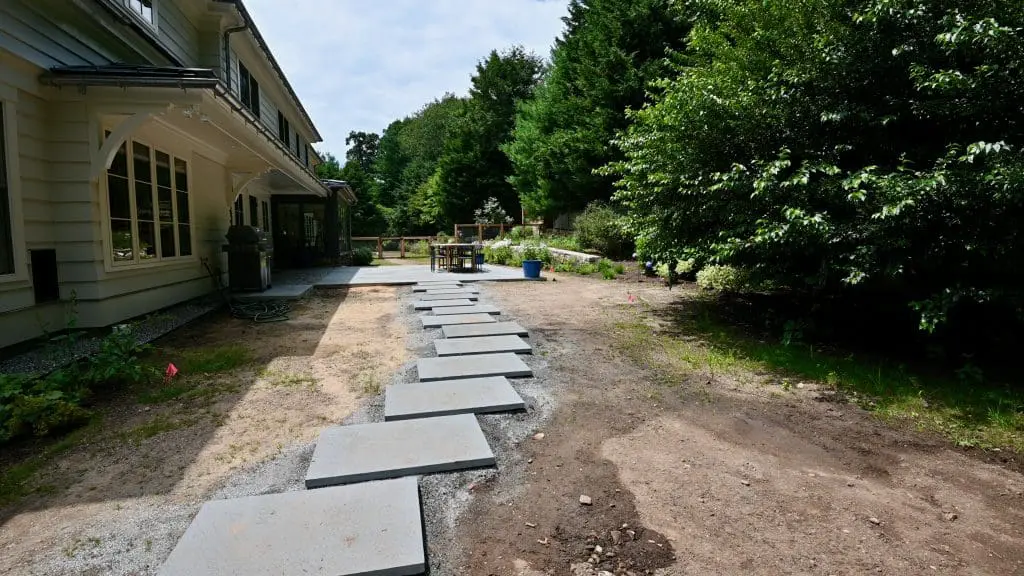
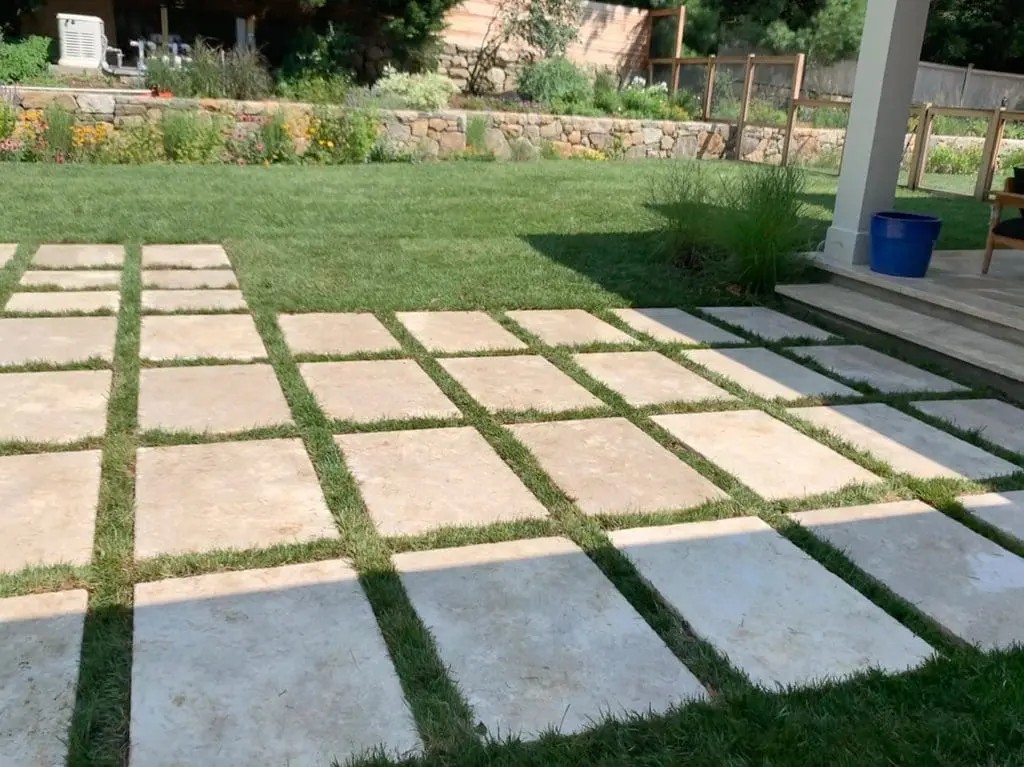
“Soft Base” Versus Concrete
Natural stone patios, walkways, walls, and staircases can be constructed on either a soft base (a mix of gravel and stone dust ) or a hard base (concrete). Concrete is valuable in extremely high traffic public areas, but is mostly unnecessary in residential landscapes, barring pool construction. To construct a soft base, we excavate and fill with 6-8″ of Item 4 gravel that we compact at 2″ intervals to ensure long-lasting stability that can withstand freezing. The stone is then laid on 1″ of stone dust. In choosing to construct a soft base over concrete, we keep all of our building materials natural-source, and avoiding the leaching, pollution, and potential respiratory harm associated with concrete.
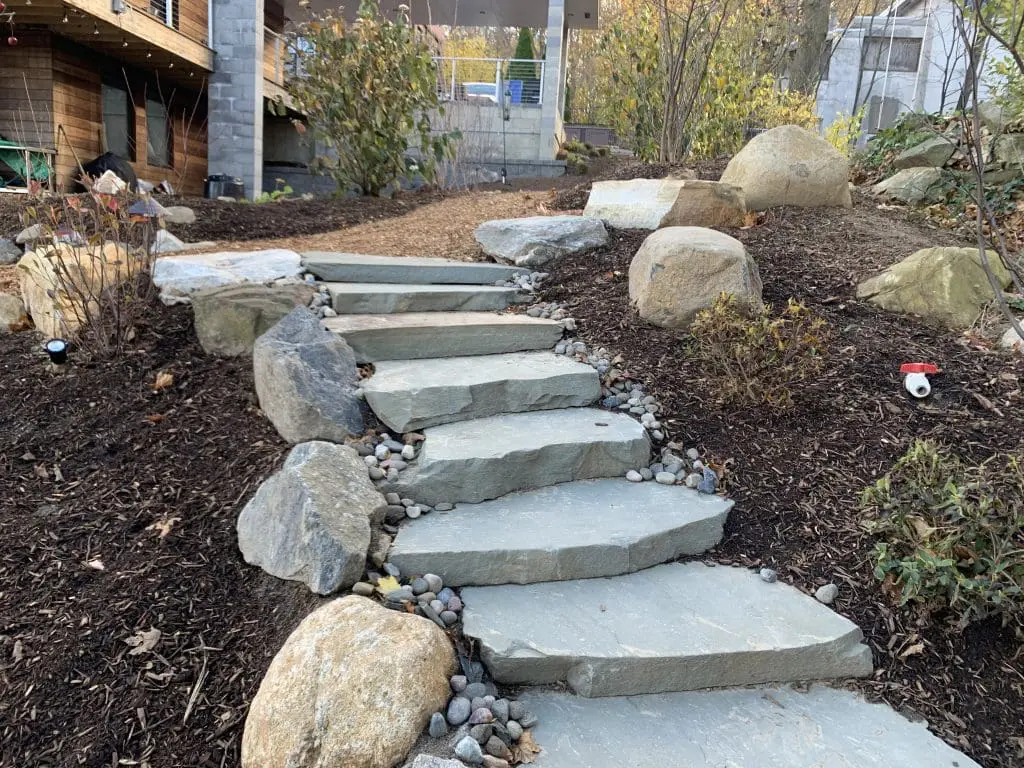
Gravel
Gravel is another natural-source material with a wide variety of applications in the landscape, from driveways to garden paths to patios to stormwater infrastructure.
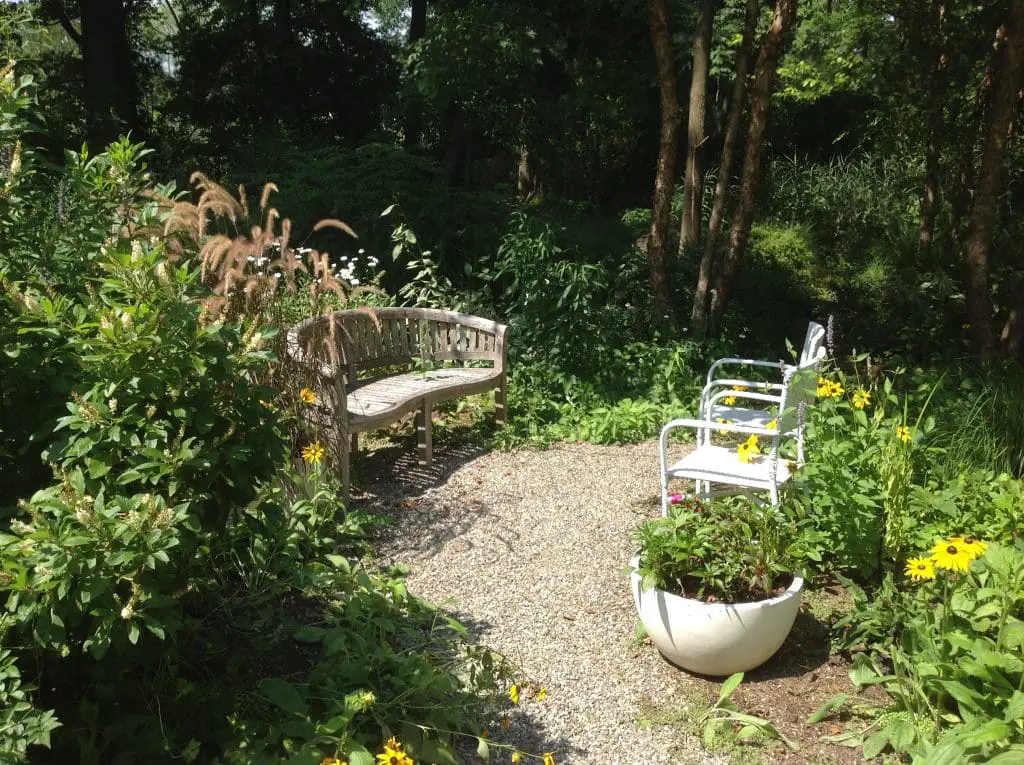
The biggest benefit of using gravel as a hardscape material is its permeability – that is, its ability to allow stormwater to infiltrate through it and eventually return to the aquifer. Gravel has natural filtration qualities at well that remove impurities collected during runoff.
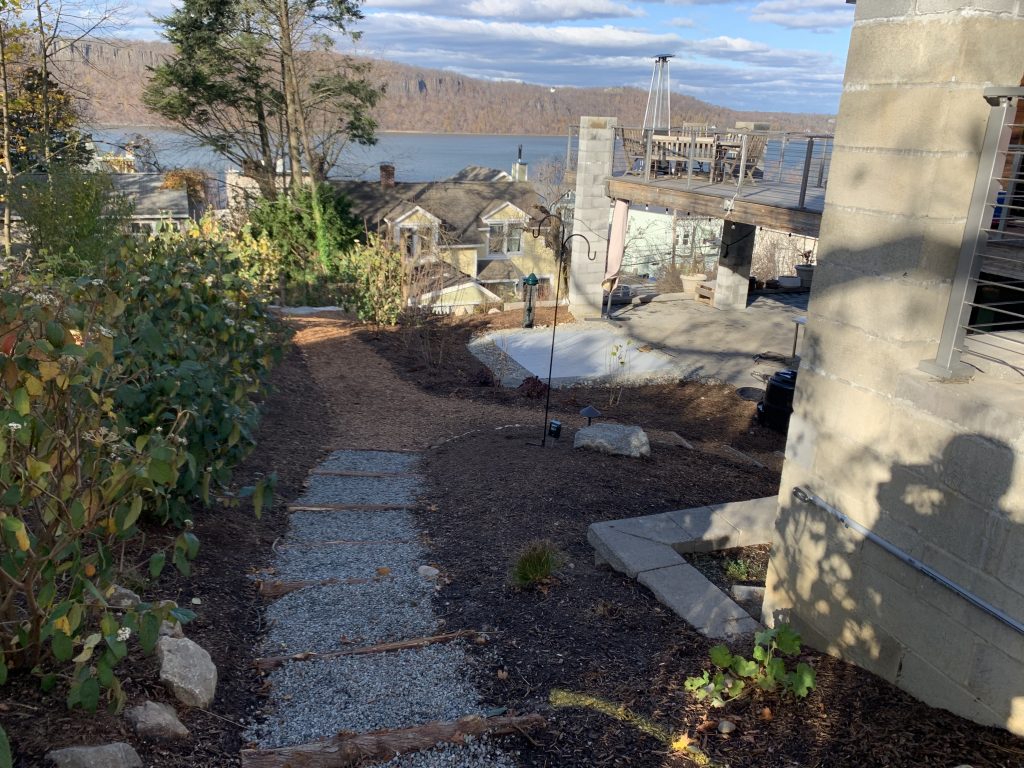
Some clients worry about gravel migrating to other parts of their landscape, but installing landscape edging simply and elegantly solves this problem. We apply OMRI-approved organic herbicide sprays to suppress weeds in gravel.

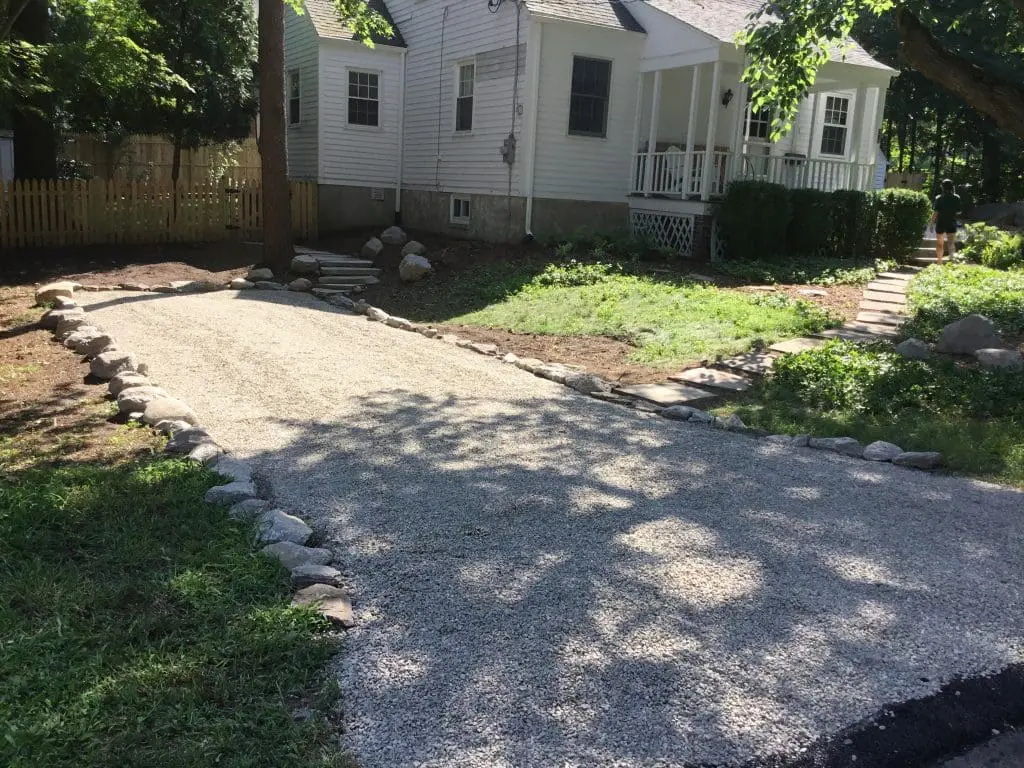
Porous Pave
Porous Pave is a fantastic innovation made of recycled rubber and a special bonding agent that allows water to run through it. Check out our video Stormwater Lab: Porous Pave vs Asphalt for a powerful demonstration!

Porous Pave’s lifespan is far superior to asphalt and does not require any re-applications throughout its lifetime (although it does require some periodic cleaning to ensure dust is not clogging the pores and reducing permeability).

Wood Chips
Wood chips are a great low-cost solution for garden pathways and playground bases. They are permeable, easy to install, and align perfectly with a naturalistic landscape design. We like to use milled cedar woodchips in these applications; the lighter color contrasts with the dark brown mulch we generally use in our garden beds. For playground bases, the cedar wood repels insects, making it a safe landing spot for children. Building codes actually specify ‘Playground Mulch’ as cedar wood chips.
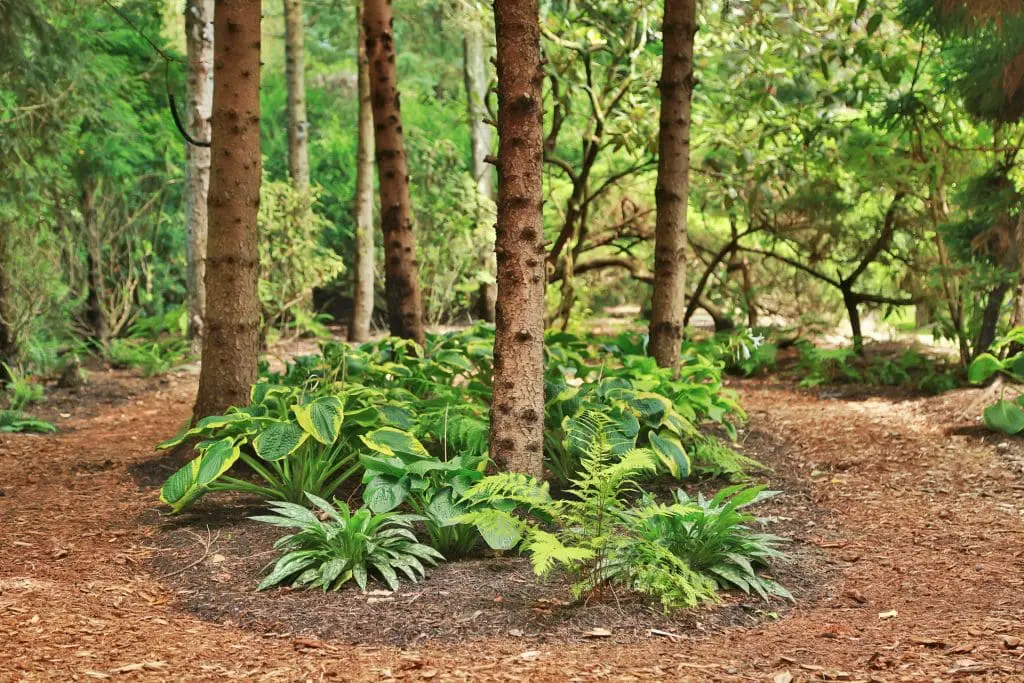
As you can see, almost of all our preferred materials are natural-source. We believe that with sustainable harvesting practices, these materials are more environmentally-sound than manufactured materials, and they deliver superior durability and design aesthetic.
For more examples of our hardscape work, check out our ‘Stone’ photo gallery.
Contact us about your hardscape or landscape design project: 914-560-6570.